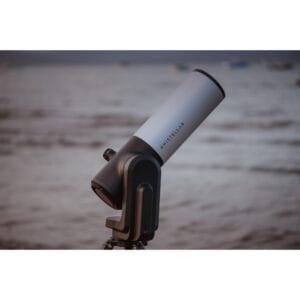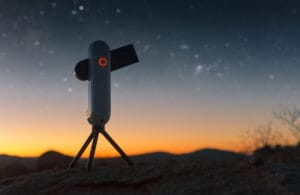Moon and Planets April 2025: What’s Visible in the Sky?
The moon and planets in April 2025 will create a series of notable conjunctions and observation opportunities. Whether you’re new to stargazing or a longtime telescope enthusiast: this is a month to wake up early or stay up late. In this guide, we list all the special celestial encounters.
April 1: Moon Meets Jupiter During Twilight
The month starts with a beautiful conjunction between the crescent moon and Jupiter. Look west about 30 minutes after sunset on April 1. The two celestial bodies will be close together, making a perfect target for binoculars or a telescope.
Tip: the moon is still young then and shows a lot of earthshine – perfect for photography with a smartphone adapter.
Jupiter is still well visible after sunset during this time of year, though it sets earlier as April progresses. This encounter is therefore one of the last good observation opportunities of Jupiter in the evening sky before the summer period.

Tip: the moon is still young then and shows a lot of earthshine – perfect for photography with a smartphone adapter.
April 4 5: Red Planet Mars Meets the Moon
In the early morning of April 4 and 5, the moon approaches Mars. The planet appears dimmer than Jupiter or Venus but is recognizable by its reddish color. This is a good opportunity to visually locate Mars if you have trouble distinguishing it from background stars.
Mars moves slowly through the constellation Aquarius and forms a visual triangle with the moon and the bright star Fomalhaut, low on the southeastern horizon. Mars is relatively low in the sky during April, so an unobstructed view is recommended.
April 24 25: Venus and Saturn near the Moon
Perhaps the month’s highlight: on April 24, Venus, Saturn, and the crescent moon shine together in the morning sky. Look east about 45 minutes before sunrise. Venus is bright and easy to recognize; Saturn is just below it, and the moon completes the trio.
Photo tip: use a telescope with smartphone mount to emphasize the contrast between the three. Venus and Saturn aren’t always visible together with the moon – don’t miss this.
Besides these three celestial bodies, Mercury is also briefly visible on clear mornings, just above the horizon, slightly south of the trio. This makes the moment extra special: four celestial bodies within one field of view, provided you use a wide angle.

Other Interesting Objects: M3 and Arcturus
In April, the globular cluster M3 is also visible near the bright star Arcturus. This deep-sky gem is one of the oldest structures in our galaxy and makes a beautiful target for telescopes from 70mm aperture onwards.
You can find M3 by following the famous “arc to Arcturus” from the Big Dipper’s handle. Once you’ve found Arcturus, look slightly west and up – M3 appears as a fuzzy patch. Under dark skies, M3 is visible with binoculars, but a telescope clearly shows the globular nature of this cluster.

Want to know more? Read our separate guide: Observing the M3 Star Cluster in April (coming soon).
Moon Phases in April 2025
The moon goes through the following phases this month:
- First Quarter: April 4
- Full Moon: April 12
- Last Quarter: April 20
- New Moon: April 27
During a new moon, the sky is darker – ideal for spotting deep-sky objects like M3.
Moon observations are most interesting around full moon. Craters like Tycho and Copernicus are beautifully visible then. Consider using a moon filter to increase contrast and prevent glare.

Conclusion: April Will be a Top Month for Celestial Shows
With four notable moon-planet conjunctions, the visibility of M3, and clear conditions around new moon, April offers everything you need for fascinating observations. Whether you’re a beginner or have been photographing for years: this is the time to set up your telescope.
Want to know which telescope best suits you for these observation opportunities? Check out our telescope selection guide for stargazing or discover smart models like the Seestar S50 and DWARF 3.




